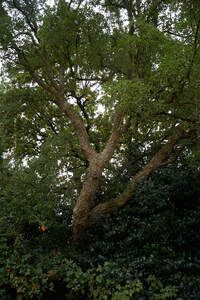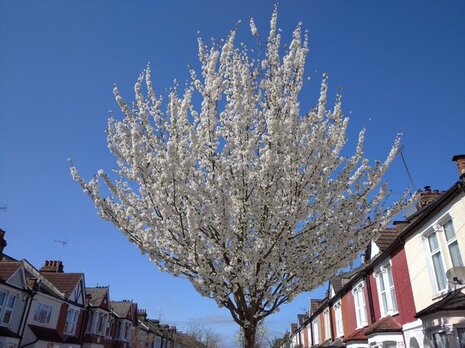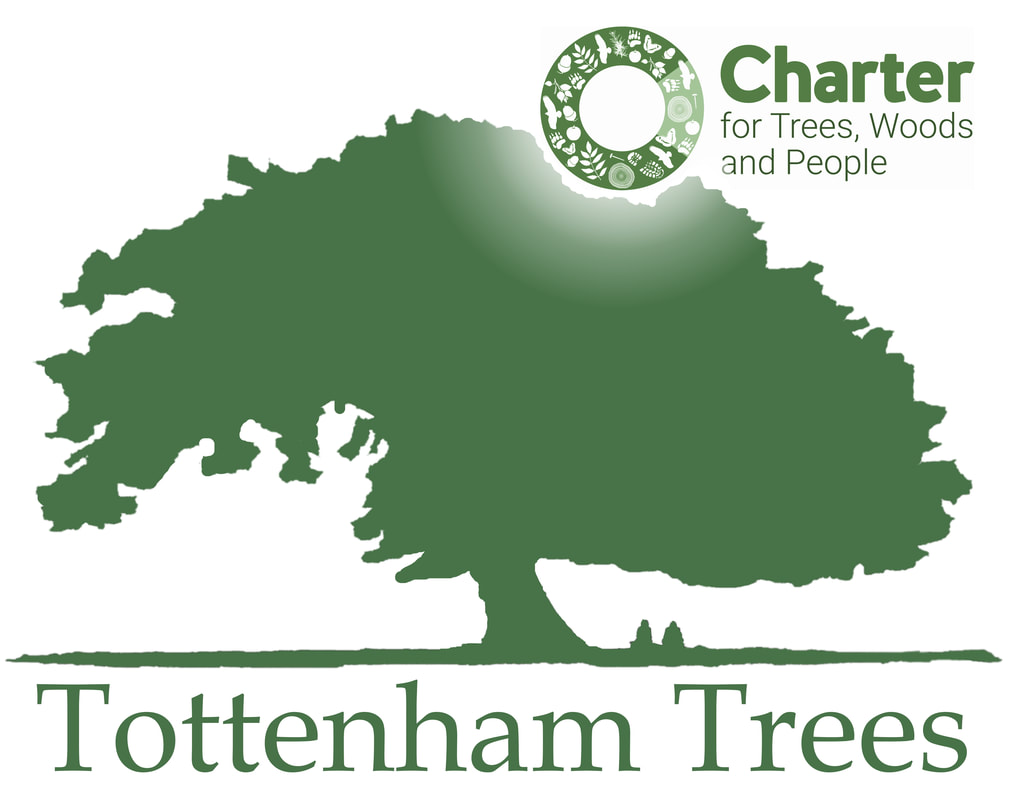The Tottenham Trees group will be highlighting a favourite street tree and park tree in Haringey every month.
Join us each month for tweets and learn all about each tree.
@TottenhamTrees
Join us each month for tweets and learn all about each tree.
@TottenhamTrees
Our #HaringeyFavouriteTrees are:
|
June: Catherine's choice
June's street tree is the ginkgo or gingko, also known as the maidenhair tree; an increasingly common street tree. Robust, long lived with few pests – it's no wonder it's popular. It has existed unchanged in China for 250m years! June Twitter Link |
|
May: Eiizabeth's choice
There are a few Cork Oaks (Quercus suber) in Haringey Parks even though it is a Mediterranean tree. Cork oaks forests are home to a multitude of animal and plant species. Cork is a sustainable crop but since it is increasingly being displaced by other materials these forests are at risk. May Twitter Link |
|
April: Catherine's choice
The Mulberry Tree genus has three species named for the fruit colour: white, red, and black mulberry (Morus alba, M. rubra, and M. nigra, respectively), with numerous cultivars. The one featured in the photo at St Ann’s Hospital is a black Mulberry. The Mulberry tree in St Ann's hospital grounds. April Twitter Link |
|
March: Charlotte's choice
There are so many Prunus varieties are blossoming this month, but this Snow Goose Cherry near Seven Sisters is exquisite. The Snow Goose Cherry is also called Umineko, which is Japanese for White-tailed Seagull. It is a hybrid of Prunus speciosa and Prunus incisa with large single white flowers with pretty pink tasselled stamens, which deepen in colour as the flower ages. The Snow Goose Cherry won the RHS Award of Merit in 1928. It is a narrow, columnar tree, which broadens with age. Its compact shape, tolerance of urban pollution, pretty blossom and stunning autumnal hues make it an ideal street tree March Twitter Link |
|
February: Noel's choice
The impressive Copper Beech (Fagus sylvatica f.purpurea) makes a fine avenue in Markfield Park. You will not find a Copper Beech easily in the wild; an ornamental tree first noted in 1690 in the "Possenwald" forest near the town of Sondershausen, Thuringia, Germany. About 99% of all copper beeches in the world are descendants of this one. Bark of beech was used for writing before the development of paper. German for "book" is Buch, Buche meaning "beech tree". Every few years a bumper crop of nuts is produced known as a mast year.The nuts are eaten by humans and animals. Slightly toxic to humans if eaten in large quantities, the nuts were nonetheless pressed to obtain an oil in 19thC England February Twitter Link |
|
January: Stephen's choice
The Dawn Redwood (Metasequoia glyptostroboides) was known only from fossil evidence until they were rediscovered in the the Hubei province of China in the 1940s. Related to the Giant and Coastal Redwoods, our January Tree of the Month doesn't quite reach their heights and differs being a deciduous conifer - like the larch, it loses its leaves in winter. This trio stands in Alexandra Park by Alexandra Palace Way down from the Palm Court of the Palace and looks spectacular in all seasons. January Twitter link |







